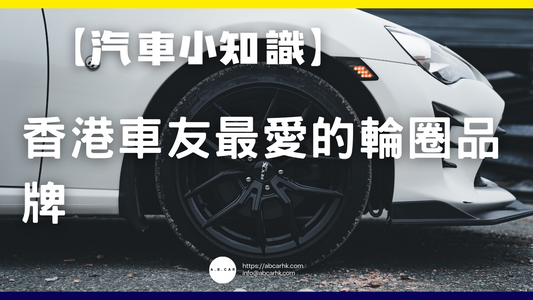[Home Tips] How to eliminate mold on walls and prevent it from growing back?

🥼 Why are walls in Hong Kong prone to mold?
Hong Kong has a high-humidity subtropical climate , with an average annual humidity of around 75%. During the spring and summer months, humidity often reaches over 90%. This, coupled with insufficient indoor ventilation, creates an opportunity for mold to thrive.
-
High humidity 💦
- When there is too much moisture in the air, water droplets easily condense on the walls, forming a breeding ground for mold.
-
Water leakage or seepage🚰
- Water leaks from pipes inside the walls and water seepage from the exterior walls cause the internal structure to be damp for a long time.
-
Indoor activities generate humidity🍳🚿
- Cooking, showering, hanging clothes, etc. increase indoor moisture, especially in units without exhaust fans or with insufficient exhaust fans.
-
Paint or building materials have poor mildew resistance🎨
- Ordinary latex paint or render has strong moisture absorption capacity and will easily become moldy when exposed to moisture.
🔍 Common types of wall mold in Hong Kong
-
Black mold ⚫
- It is commonly found in bathrooms, kitchens, and windowsills. It is dark in color and has strong adhesion.
-
Green mold 🟢
- It is often found in corners with poor ventilation and damp and dark places.
-
White mold ⚪
- Sometimes it is salt precipitation (crystallization on the wall after water seepage), or it may be fungus.
🧪 Health risks of moldy walls
- Irritate the respiratory tract, causing nasal allergies and asthma🤧
- Long-term contact can cause skin allergies, redness, swelling and itching🩹
- Some molds release mycotoxins , which are particularly dangerous to people with weakened immune systems.
🧹 Practical methods for removing mold (from mild to severe)
⚠️ Editor's reminder: Wear a mask and gloves when cleaning, and it is best to open the windows for ventilation to avoid inhaling spores.
1️⃣ Mild mildew (early stage)
White vinegar method 🍋
- White vinegar is a natural weak acid that has antibacterial and mildew-removing properties.
step :
- Mix white vinegar and water in a 1:1 ratio and put it into a spray bottle.
- Spray on the mildew stain and let it sit for 15 minutes.
- Wipe clean with a damp cloth and then dry with a dry cloth.
Alcohol Law 🥃
- 75% disinfectant alcohol can kill bacteria and prevent mildew
step :
- Pour rubbing alcohol into a spray bottle and spray directly on the mildew stain.
- Wait 5-10 minutes and wipe away with a cloth.
💡 Suitable for small areas and non-porous surfaces (such as tile joints).
2️⃣ Moderate mold (large area)
Bleach method 🧴
- Effective in killing mold spores, but pay attention to ventilation
step :
- Dilute bleach with water in a ratio of 1:3.
- Apply to the mildew stain with a rag or sponge and let it sit for 10 minutes.
- Wipe clean with clean water and dry.
⚠️ Do not mix with acidic cleaners to avoid producing toxic gases.
Commercially available anti-mildew cleaners🛒
- Hardware stores and supermarkets in Hong Kong have mold inhibitors (containing chlorine or oxidizing ingredients), which are more convenient than bleach and have a lighter odor.
3️⃣ Severe mold (recurring)
- Scrape away the old plaster/paint until you see the dry base
- Check the source of water leakage (leakage from above, cracks in the external wall, water leakage from pipes)
- Re-plaster and apply anti-mildew paint
🛠️ Cure and prevent regrowth
1️⃣ Control indoor humidity
- Set the dehumidifier to 50%-60% humidity🌀
- Close windows and dehumidify during the return of the south wind
- Use exhaust fans in bathrooms and kitchens to remove moisture
2. Improve ventilation
- Open windows frequently to create convection 🌬️
- A small circulation fan can be added to the long-term damp corner
3️⃣ Anti-mildew paint
- Use mildew-proof and antibacterial paint when renovating (brands such as Nippon and ICI Dulux are available in Hong Kong)
- Apply mildew-resistant primer first, then topcoat for a longer-lasting effect
4️⃣ Regular inspection
- Check corners, cabinet backs, and window sides every month
- If water stains or damp walls are found, immediately address the source of water seepage.
🌿 Editor's tips for preventing mold
- Keep furniture 3-5cm away from the wall to ensure good air circulation
- Place bamboo charcoal bags and moisture-proof agents in the cabinet to absorb moisture
- Keep the bathroom floor dry to reduce moisture penetration into the bottom of the wall
- Running a dehumidifier continuously during the return of the south wind is the best way to prevent mold.
💡 Editor's Tips
- 🌟 After removing the mold, be sure to find the source of moisture , otherwise it will recur in a few days
- 🌟 Although bleach can quickly remove mold, it will discolor the paint. It is recommended to test it in an inconspicuous area first.
- 🌟 If the mold area exceeds 1 square meter, or there are symptoms such as odor or dizziness, it is best to seek professional treatment
- 🌟 Water seepage in old buildings can cause deep-rooted mold. Simply cleaning the surface is only a temporary solution, not a permanent one.
💬Editor’s summary :
Mold on Hong Kong walls is a combination of dampness, poor ventilation, and water seepage. A four-step approach is required to eradicate the mold: remove the mold → control humidity → block the water source → and then renovate to prevent mold. Short-term treatments can be done with white vinegar or bleach, but long-term improvements require environmental improvements and the use of mold-resistant building materials. This is the first step to truly say goodbye to mold. 🦠🚫✨



